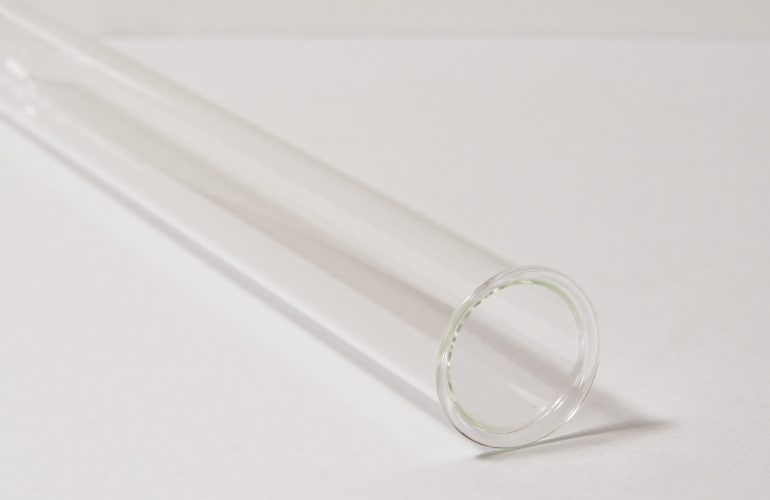
Warning: We need to stress that this is not a do-it-yourself guide or instruction manual for creating glass pipes! If you’ve decided that you’d like to learn how to create a glass pipe then you should find a proper instructor to show you the ropes. Many universities and community colleges can be found hosting glass blowing classes.

Equipment Needed
- Furnace
- Blowpipe
- Punty
- Blow torch
- A steel table to shape the glass
- Hand tools including jacks, wooden blocks, shears, tweezers, and an annealer
Safety Precautions
The most important thing to consider when making your glass pipe is that the process of blowing glass creates a lot of heat. The blowing can occur at more than 2,000 degrees. It is very important to have the right tools, safety gear, and to use caution when engaging in this activity. Also, this is not a task that can be tried at home without proper instruction and oversight, especially if you’re just learning to blow glass. This article is purely for information and simply provides an overview of the process to help you get an idea of how beautifully designed glass smoking pipes are created. If you are interested in creating them yourself you will need an instructor. Here are a few safety tips that you should always keep in mind when creating a glass pipe.- Do not lift the materials above your head. The danger is in the hot glass dripping onto your skin, hands, face, and eyes. The glass at that point, will be very hot, and it can cause damage to your skin. This is very dangerous.
- Use safety glasses at all times.
- Only heat solvent free glass that is made for glassblowing. Other types of glass can have other chemicals in it that can cause an explosion of glass.
- Tie back long hair, and wear closed toe protective footwear.
- Have fire safety gear readily available as well as a first aid kit.
- Roll up your sleeves and wear flame retardant clothing/vests.
Creating a Glass Pipe
 With all of the tools in place and all of the safety precautions considered, the process of making a glass pipe can now start. Initially, use the torch, and heat one end, and turn it around and around quickly. Heat the ends of your large tube, and make sure to heat it evenly. After it is heated and one end is closed, blow in the pipe, while covering the hole using your thumb. This will cause trapped air to stretch the inside of the pipe. This creates a bubble. You can even move the glass more to decorate it, however, as you continue to work with it, make sure you are rotating the rod continuously.
Make sure you keep the inside part hollow so that the tube can go through to the stretched area. The bigger the piece, the more you will gather. If you want to add some colour and design you can melt colors into edges of the bubbled and stretched area. Make sure the colors are really melted in each time you add them in so that it is secured into the glass. Finally, use the list of tools above to shape the tube so that it becomes a pipe, with the end of the pipe coming out of the bubble.
When your pipe shapes and colours are finished, cool your pipe by placing it into cool water. While you do this, keep your thumb over the hole so that the shape is not ruined by water moving through. Use the annealer overnight to cool properly.
With all of the tools in place and all of the safety precautions considered, the process of making a glass pipe can now start. Initially, use the torch, and heat one end, and turn it around and around quickly. Heat the ends of your large tube, and make sure to heat it evenly. After it is heated and one end is closed, blow in the pipe, while covering the hole using your thumb. This will cause trapped air to stretch the inside of the pipe. This creates a bubble. You can even move the glass more to decorate it, however, as you continue to work with it, make sure you are rotating the rod continuously.
Make sure you keep the inside part hollow so that the tube can go through to the stretched area. The bigger the piece, the more you will gather. If you want to add some colour and design you can melt colors into edges of the bubbled and stretched area. Make sure the colors are really melted in each time you add them in so that it is secured into the glass. Finally, use the list of tools above to shape the tube so that it becomes a pipe, with the end of the pipe coming out of the bubble.
When your pipe shapes and colours are finished, cool your pipe by placing it into cool water. While you do this, keep your thumb over the hole so that the shape is not ruined by water moving through. Use the annealer overnight to cool properly.
